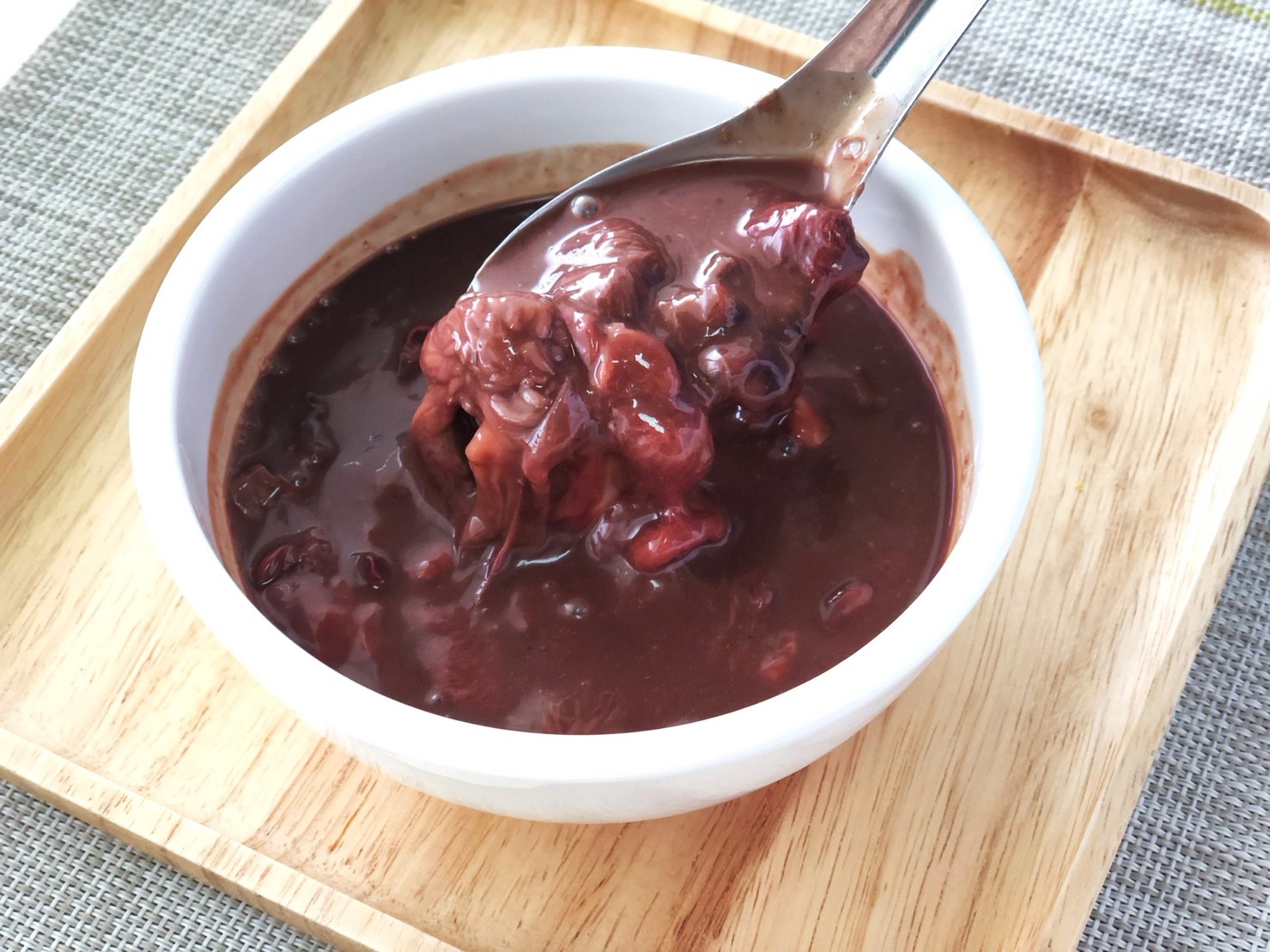Tai-plaa
- Name (Thai)
- ไตปลา
- Name (English)
- Fermented fish viscera
- Local name
- Tai-plaa Kee-dee-dorng Kee-plaa-dorng Kee-dee Poong-plaa-mak
- Fish normally used
-
Lutjanus sp. (Ka-pong)
Mugil sp. (Ka-bork)
Rastrelliger brachysoma (Too)
Johnius sp. (Chuad)
Channa striatus (Chorn)
Scomberoides sp. (Sala)
Scomberoides sp. (See-siad)
Megalaspis cordyla (Haang-kaeng)
- Product
- Fishery
- Ingredients
- Viscera from seat water fish, sea salt.
- Fermentation
- 10-20 days.
- Storage life
- 1 Year.
- Microorganisms
-
Bacillus polymyxa
Reference The traditional fermented foods of Thailand ISBN 9679932249 Year 1995 Bacillus subtilisReference The traditional fermented foods of Thailand ISBN 9679932249 Year 1995 Lactobacillus sp.Reference The traditional fermented foods of Thailand ISBN 9679932249 Year 1995 Micrococcus sp.Reference The traditional fermented foods of Thailand ISBN 9679932249 Year 1995 Pediococcus halophilusReference The traditional fermented foods of Thailand ISBN 9679932249 Year 1995 Pediococcus sp.Reference The traditional fermented foods of Thailand ISBN 9679932249 Year 1995 Staphylococcus aureusReference The traditional fermented foods of Thailand ISBN 9679932249 Year 1995 Staphylococcus epidermidisReference The traditional fermented foods of Thailand ISBN 9679932249 Year 1995 Vibrio fischeriReference The traditional fermented foods of Thailand ISBN 9679932249 Year 1995 - Properties
- Semi-solid of salty taste and red to dark brown colour.
- Method
- Clean the fish viscera by pressing to remove the stomach and the intestine contents. If this is not done, the product will have a bitter taste, which is preferred in some places. Wash the viscera and add salt in the proportion of fish viscera to salt: 10:1 to 5:1 by weight. In some places a little potassium nitrate is added also. The ingredients are mixed well and packed in closed containers such as earthen jars. The jars are left in the sun and fermentation takes place within 10-20 days. If Tai-plaa is made for eating in the family, the producers prefer the viscera of big fish such as Plaa-ka-pong and plaa-ka-bork which have high fat content. The product has a short storage life as it turns rancid rapidly.
- Production
- Large scale home industry.
- Consumption
- 1. Consume as it is by adding chopped shallots, chilli, lemongrass and lime juice. The dish is eaten with vegetables such as lettuce, cucumbers and eggplants. 2. It is the main ingredient of the famous southern dish Gaeng-plaa or Gaeng-tai-plaa which is a favorite dish throughout Thailand.


